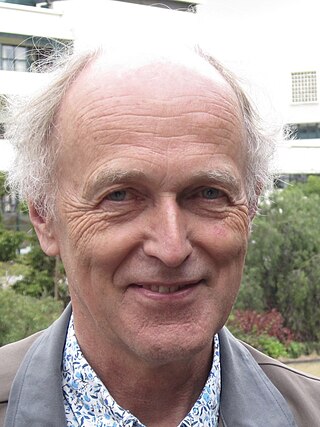A modeling language is any artificial language that can be used to express data, information or knowledge or systems in a structure that is defined by a consistent set of rules. The rules are used for interpretation of the meaning of components in the structure of a programing language.

IDEF, initially an abbreviation of ICAM Definition and renamed in 1999 as Integration Definition, is a family of modeling languages in the field of systems and software engineering. They cover a wide range of uses from functional modeling to data, simulation, object-oriented analysis and design, and knowledge acquisition. These definition languages were developed under funding from U.S. Air Force and, although still most commonly used by them and other military and United States Department of Defense (DoD) agencies, are in the public domain.

An entity–relationship model describes interrelated things of interest in a specific domain of knowledge. A basic ER model is composed of entity types and specifies relationships that can exist between entities.

Data modeling in software engineering is the process of creating a data model for an information system by applying certain formal techniques. It may be applied as part of broader Model-driven engineering (MDE) concept.

Enterprise integration is a technical field of enterprise architecture, which is focused on the study of topics such as system interconnection, electronic data interchange, product data exchange and distributed computing environments.

An information model in software engineering is a representation of concepts and the relationships, constraints, rules, and operations to specify data semantics for a chosen domain of discourse. Typically it specifies relations between kinds of things, but may also include relations with individual things. It can provide sharable, stable, and organized structure of information requirements or knowledge for the domain context.
Decomposition in computer science, also known as factoring, is breaking a complex problem or system into parts that are easier to conceive, understand, program, and maintain.

Enterprise modelling is the abstract representation, description and definition of the structure, processes, information and resources of an identifiable business, government body, or other large organization.

Jean Leonardus Gerardus (Jan) Dietz is a Dutch Information Systems researcher, Professor Emeritus of Information Systems Design at the Delft University of Technology, known for the development of the Design & Engineering Methodology for Organisations. and his work on Enterprise Engineering.

In systems engineering, software engineering, and computer science, a function model or functional model is a structured representation of the functions within the modeled system or subject area.
Enterprise engineering is the body of knowledge, principles, and practices used to design all or part of an enterprise. An enterprise is a complex socio-technical system that comprises people, information, and technology that interact with each other and their environment in support of a common mission. One definition is: "an enterprise life-cycle oriented discipline for the identification, design, and implementation of enterprises and their continuous evolution", supported by enterprise modelling. The discipline examines each aspect of the enterprise, including business processes, information flows, material flows, and organizational structure. Enterprise engineering may focus on the design of the enterprise as a whole, or on the design and integration of certain business components.
Business systems planning (BSP) is a method of analyzing, defining and designing the information architecture of organizations. It was introduced by IBM for internal use only in 1981, although initial work on BSP began during the early 1970s. BSP was later sold to organizations. It is a complex method dealing with interconnected data, processes, strategies, aims and organizational departments.

IDEF3 or Integrated DEFinition for Process Description Capture Method is a business process modelling method complementary to IDEF0. The IDEF3 method is a scenario-driven process flow description capture method intended to capture the knowledge about how a particular system works.
In philosophy, a process ontology refers to a universal model of the structure of the world as an ordered wholeness. Such ontologies are fundamental ontologies, in contrast to the so-called applied ontologies. Fundamental ontologies do not claim to be accessible to any empirical proof in itself but to be a structural design pattern, out of which empirical phenomena can be explained and put together consistently. Throughout Western history, the dominating fundamental ontology is the so-called substance theory. However, fundamental process ontologies have become more important in recent times, because the progress in the discovery of the foundations of physics has spurred the development of a basic concept able to integrate such boundary notions as "energy," "object", and those of the physical dimensions of space and time.
Mark Stephen Fox is a Canadian computer scientist, Professor of Industrial Engineering and Distinguished Professor of Urban Systems Engineering at the University of Toronto, known for the development of Constraint Directed Scheduling in the 1980s and the TOVE Project to develop an ontological framework for enterprise modeling and enterprise integration in the 1990s.
Junichi Iijima, Japanese, Enterprise Engineer and Professor of the Department of Industrial Management and Engineering at the Tokyo Institute of Technology in Japan.
Johannes Adrianus Petrus (Jan) Hoogervorst is a Dutch organizational theorist, business executive, management consultant, and Professor Enterprise Governance and Enterprise Engineering at the University of Antwerp, known for his work in the field of enterprise engineering.

J.B.F. (Hans) Mulder is a Dutch computer scientist, Venture manager in the IT industry, and Professor at the University of Antwerp, known for his work on enterprise engineering.
Martinus (Martin) Op 't Land is a Dutch organizational theorist, consultant and Professor of Enterprise Engineering at the University of Antwerp and at Antwerp Management School, known for his contributions in the field of Enterprise Architecture.
Jan Verelst is a Belgian computer scientist, Professor and Dean of the Department of Management Information Systems at the University of Antwerp, and Professor at the Antwerp Management School, known for his work on Normalized Systems.










